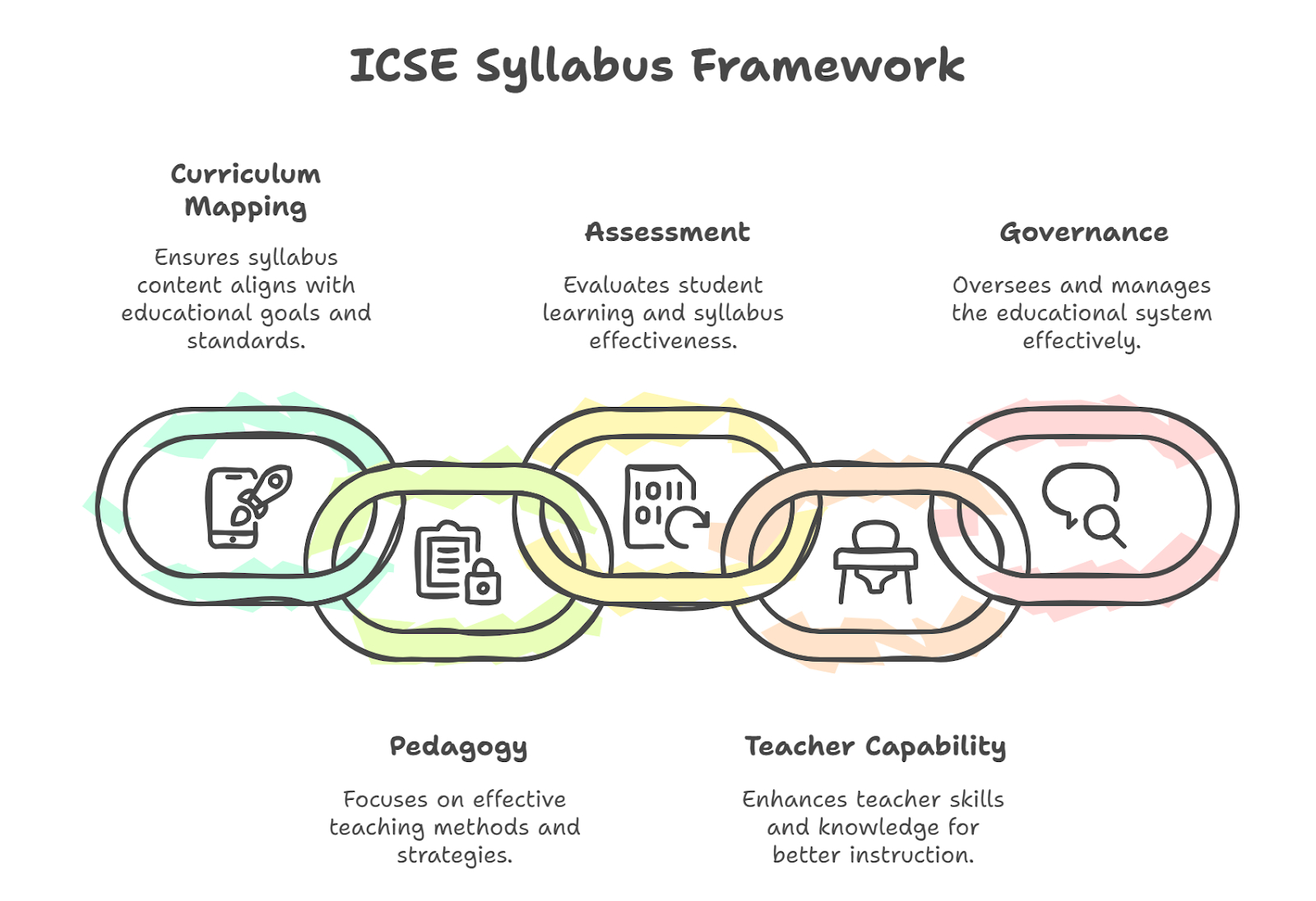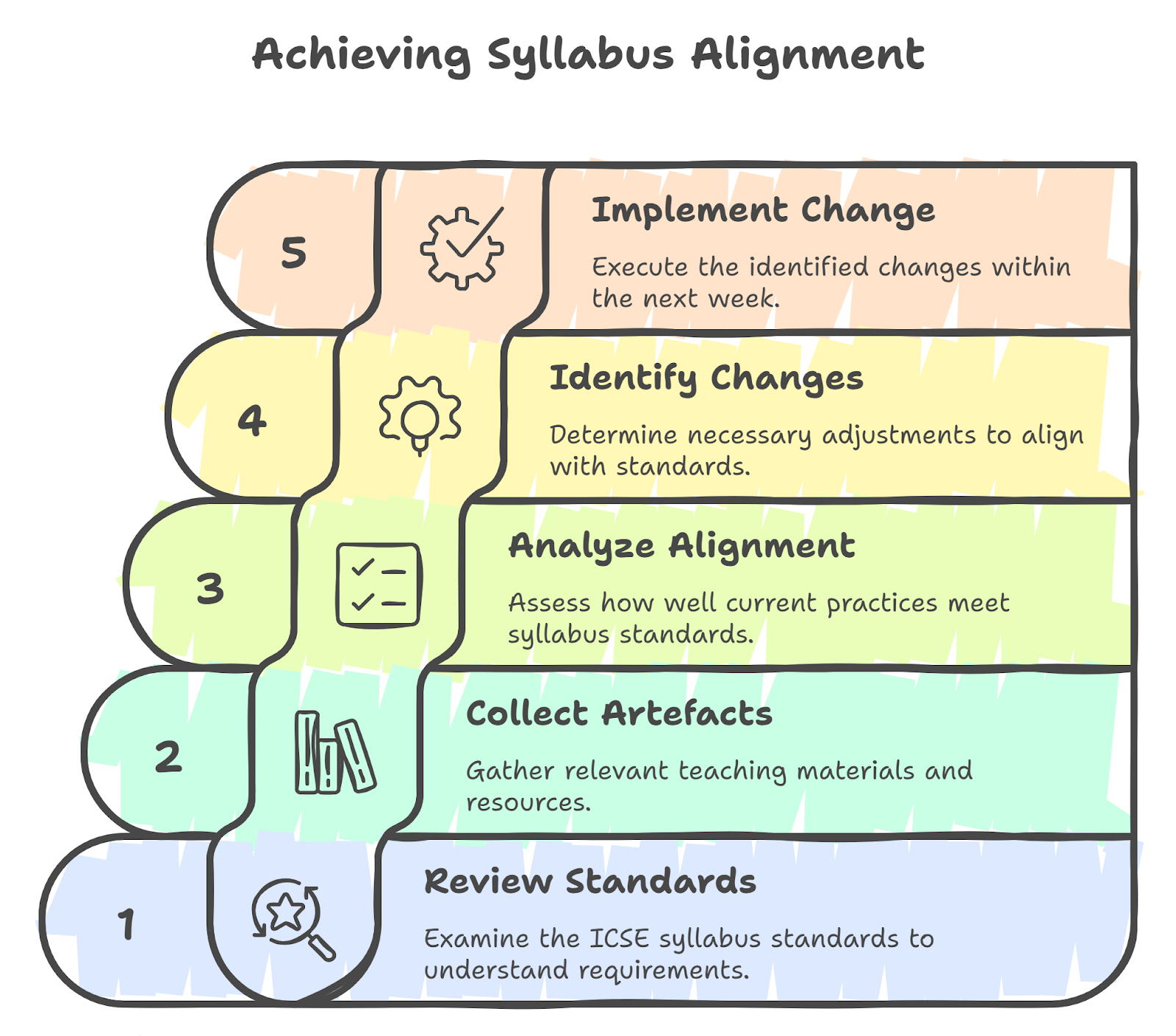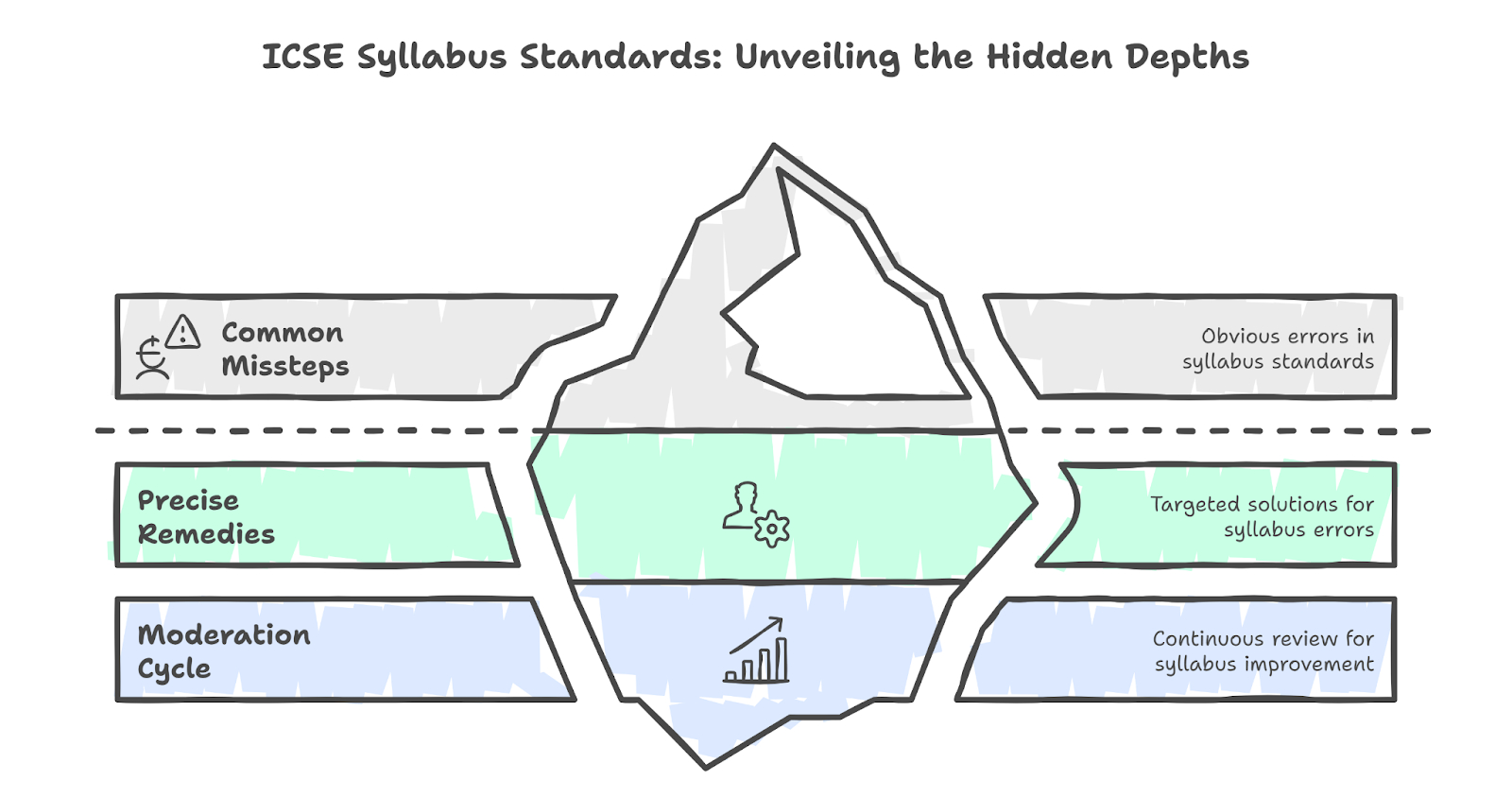ICSE Syllabus
- Home
- /
- ICSE Syllabus
ICSE Syllabus Standards: Is Your Institution Fully Aligned for 2025–26?
If you lead an ICSE school, alignment is not a document on a shelf; it is what students actually learn, practise, and evidence every week. This guide shows how to check, remediate, and future‑proof your ICSE Syllabus alignment without disrupting teaching time. It follows NatureNurture’s research‑led approach to building joyful, outcome‑centred learning ecosystems, and uses a simple readiness model you can run this term.
Why ICSE Syllabus alignment matters now
ICSE Board expectations are evolving alongside NEP priorities; parents expect visible mastery, teachers need clarity, and leaders require evidence that stands up to scrutiny. Treat alignment as a living cycle, not a one‑off compliance task. NatureNurture’s work with partner schools shows that curriculum clarity, teacher capacity, and authentic evidence lift achievement and trust at the same time.
From a strategy lens, alignment protects your brand and reduces academic drift across sections. From a classroom lens, it converts topics into competencies that learners can demonstrate through real tasks. NatureNurture’s ecosystem model integrates content, pedagogy, assessment, and culture so alignment becomes habit, not headache.
What ‘aligned’ looks like: a five‑dimensional readiness model
Alignment is visible across five dimensions. Use these signals to locate your current state and the next step.
1) Curriculum mapping and documentation
Tighten CBSE ICSE Curriculum Mapping so every unit shows outcomes, textbook scope, and enrichment, with cross‑references to ICSE Syllabus pages. Maintain one source of truth that teachers actually open. Build topic‑to‑competency maps, not just term planners.
Signals of alignment
-
Unit plans identify competencies and page ranges
-
Vertical progression is explicit across grades
-
Enrichment and remediation notes are embedded
2) Pedagogy and learner experience
Move beyond recitation. Blend Project‑Based Learning Education and Activity‑Based Learning in Classrooms so every topic includes an inquiry, a hands‑on mini‑task, and a reflective dialogue. This preserves board rigour while building agency and transfer.
Signals of alignment
-
Weekly hands‑on task linked to an ICSE outcome
-
Student talk, collaboration, and reflection protocols
-
Resources for diverse learners without diluting standards

3) Assessment and evidence
Replace single, high‑stakes tests with varied Assessment Methods that produce credible artefacts; quizzes, performances, lab books, and moderated portfolios. Assessment should teach, not just measure; rubrics must reference the same indicators used in planning.
Signals of alignment
-
Rubrics and anchor samples by indicator
-
Portfolios curated against unit outcomes
-
Moderation cycles scheduled mid‑term and end‑term
4) Teacher capability and support
Alignment lives or dies in classrooms. Provide Professional Development for Teachers that is job‑embedded; model lessons, co‑planning, and observation‑feedback cycles. Link every workshop to a live unit so training converts into practice.
Signals of alignment
-
Coaching tied to current units
-
Shared bank of tasks, rubrics, and exemplars
-
New teachers inducted with clear playbooks
5) Governance, reporting, and stakeholder trust
Leaders need dashboards that track proficiency by indicator, not just by subject. Parents need reports that explain what a grade means and show samples. Treat these artefacts as your institutional memory for audits and improvement.
Signals of alignment
-
Indicator‑level dashboards each term
-
Parent reports include samples and next steps
-
Annual review closes the loop into next year’s plans
Run a 60‑minute ICSE Syllabus alignment audit
You can diagnose your current state this week; gather one grade team and follow these steps.
Step 1: Pick one recent unit and open the plan
Lay the plan beside the ICSE Syllabus scope. Tick every place where outcome wording in the plan mirrors board language with age‑appropriate clarity.
Step 2: Sample three student portfolios
For the same unit, pull three portfolios. Check if evidence matches the stated outcomes and if rubrics use the same indicators. Note any mismatch and why it occurred.
Step 3: Observe a 20‑minute lesson slice
Look for task‑clarity, student talk, and checks for understanding. Confirm that materials and questioning link back to mapped outcomes. Record two positives, one change.
Step 4: Scan assessments and feedback
Do rubrics define proficiency levels clearly? Do students receive actionable comments they can use in the next attempt? Capture gaps and quick wins.
Step 5: Agree one change for next week
Keep it small; rewrite one outcome, refine one rubric row, or add one hands‑on task. Document and revisit after two lessons. Small, visible wins build culture.

Common pitfalls and practical fixes
Pitfall: Unit plans list topics, not competencies.
Fix: Translate topics into a Competency Based Curriculum with observable verbs; attach page references and sample tasks for each indicator.
Pitfall: Projects feel “extra” and slip near exams.
Fix: Reframe projects as vehicles for syllabus mastery; schedule one short, high‑yield task weekly to keep them integral.
Pitfall: Evidence is abundant but unreliable.
Fix: Run moderation meets with anchor samples; calibrate levels and update rubrics accordingly.
Pitfall: New teachers reinvent the wheel.
Fix: Issue a starter pack; exemplar plans, rubrics, and task bank aligned to ICSE strands, supported by Professional Development for Teachers.

How NatureNurture partners with ICSE schools
NatureNurture serves as a School Curriculum Provider offering Curriculum Alignment Services and K‑12 Education Solutions that are board‑aligned and classroom‑ready. You receive mapped curriculum, exemplar units, assessment tools, and coaching pathways that help teachers deliver the ICSE Syllabus with confidence. Programmes are NEP‑Aligned Education Programs and integrate life skills, values, and innovation for future‑ready learners.
What this means for your faculty
-
Custom Curriculum Development with CBSE ICSE Curriculum Mapping
-
Task banks for Project‑Based Learning Education and Activity‑Based Learning in Classrooms
-
Rubrics, portfolios, and moderation protocols for robust Assessment Methods
-
Coaching and observation cycles under School Transformation Programs
A short story from a staffroom
Mid‑term, a grade team compared two sets of lab books. The first set had immaculate diagrams but no explanation; the second set had rough sketches with clear reasoning and data tables. When rubrics were aligned to indicators and teachers modelled reflective writing, the third set combined both; precision and thinking. Parents saw the difference at showcase night; the evidence spoke for itself. Alignment was not louder; it was clearer.
Call to action
If you would like a concise audit and a term‑wise roadmap, invite NatureNurture to run the 60‑minute review, co‑plan one anchor unit, and mentor your lead teachers for six weeks. It is a proven, low‑friction way to secure ICSE alignment while elevating learning quality.
©2025 NatureNurture

